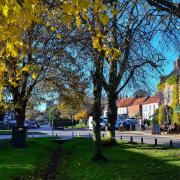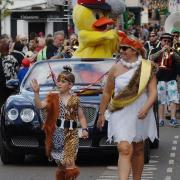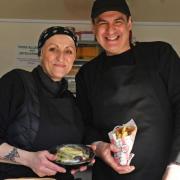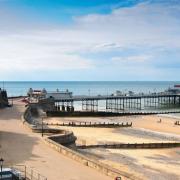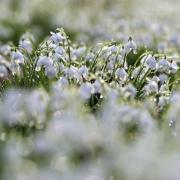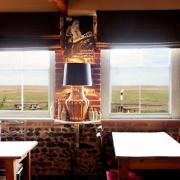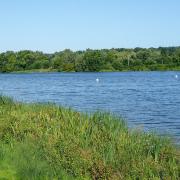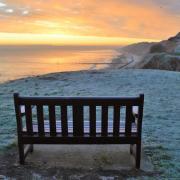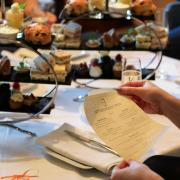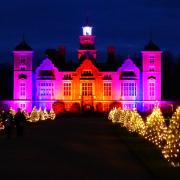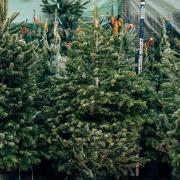Wildlife still sparkles through February’s gloom, says Nick Acheson of Norfolk Wildlife Trust

It is grey and it is cold and my toes hurt. My nose hurts too, with each intake of below-zero, marsh-damp air. The shortest day was weeks ago but at 3pm, as my friends and I stand in the car park at Hickling Broad rubbing our gloved hands against the cold, it is already the end of a February day. It has hardly been a day – more a watery pause in the winter night – but it has been happy, in the way that old friends, warm soup, and gossiping geese in wet fields bring happiness.
We walk from the car park down a muddy minor road between tall hedges, long since leafless and stark. Leafless they may be; birdless they are not. Noisy fieldfares, coming from the same wide, wet Broadland fields as the geese, skip and flutter along the hedge tops on their way to roost. Each bird, joining the flock from the fields, stalls its fall from the sky with its black tail fanned.
Through a tractor’s gap in the hedge we see a barn owl at the back of a field, whiter than the misty sky, but not much. My hackles go up. I have written hundreds of articles for Norfolk Wildlife Trust and I don’t recall ever mentioning a barn owl. I have loved barn owls since my childhood in north Norfolk when, walking the dog, I would meet them on winter days in the valley of the River Stiffkey. My beef is not – at all – with barn owls. It is with barn owls as a lazy writers’ shorthand for all that is wild and beautiful in Norfolk. Why must barn owls always be ‘quartering’? Are there no other verbs to describe their hunting? Why must they always be ‘ghostly’?
But I digress, and in so doing I’m revealing my grumpier self. My friends, meanwhile, are cheerfully watching the ghostly owl as it quarters the field, unaware of my mind’s irascible tangent. This barn owl, this old friend, is the first to appear in a dusk curtain call of birds which inhabit the marshes of Hickling Broad.

We have come to witness the remarkable raptor roost at Stubb Mill. We have been coming here for 30 years, since long before there was a platform for birders, since long before Norfolk Wildlife Trust and its neighbours would admit to the presence of cranes in what is now the Upper Thurne Living Landscape, so tenuous was their recolonisation of Norfolk (and the British Isles) back then.
Cranes. We hear them long before we see them. The writers’ shorthand for this sound is ‘bugling’. To me it is far more; perhaps the wildest noise in Europe, part purring parp, part rattling, exuberant cry. I do not have the words for this great wild noise touching us from the mist. I do not have the words for how it makes us feel: the pride and happiness in knowing that Norfolk Wildlife Trust and partners have nurtured this giant bird back from centuries of national absence, right here in the Upper Thurne.
Marsh harriers are gathering in the last light, many of them, looping lazily, lower and lower, over the scrubby marsh in which they will roost. They come from the far shores of Hickling Broad, from reed, drain and dyke, leaving the predatory night shift to be peopled by foxes, otters and owls. Bound for the same roost, a hen harrier slices diagonally through the circling stack of its relatives. It is a male, another shorthand ‘ghost’ in the gloom of this February dusk. Like the good old ghosts of duvet-snuggled, childhood stories, this one sends a thrill down our collected spines.
A dozen cranes appear above the alder stand behind us. Silent now, they plane past, scattering water deer as they drop to roost in the muddy grass. It is dark, almost, and the last of the harriers, barely to be seen, are reaching their roost. It is time we day creatures went home, and, as we turn to walk the lane again, woodcock burst from by us in the wood, round-bellied and fast.

So ends the curtain call of Hickling’s feathered players. Walking back in the start of the night, we keep silence. Each of us replays each scene, reviews each character we have seen. We are glad to have come. We are happy to have met these inhabitants of Hickling Broad. We are thankful that the marshes they need are protected here and that for more than 70 years Norfolk Wildlife Trust, its staff, its partners and its many volunteers have cared for this rare place. We now look forward to safeguarding its future.
Help us protect Hickling Broad, a national jewel at the heart of the Broads. Donate by calling 01603 625540 or visiting the website, www.norfolkwildlifetrust.org.uk/support-us/hickling-broad-land-purchase-appeal or the Just Giving page www.justgiving.com/campaigns/charity/norfolkwildlifetrust/hickling





